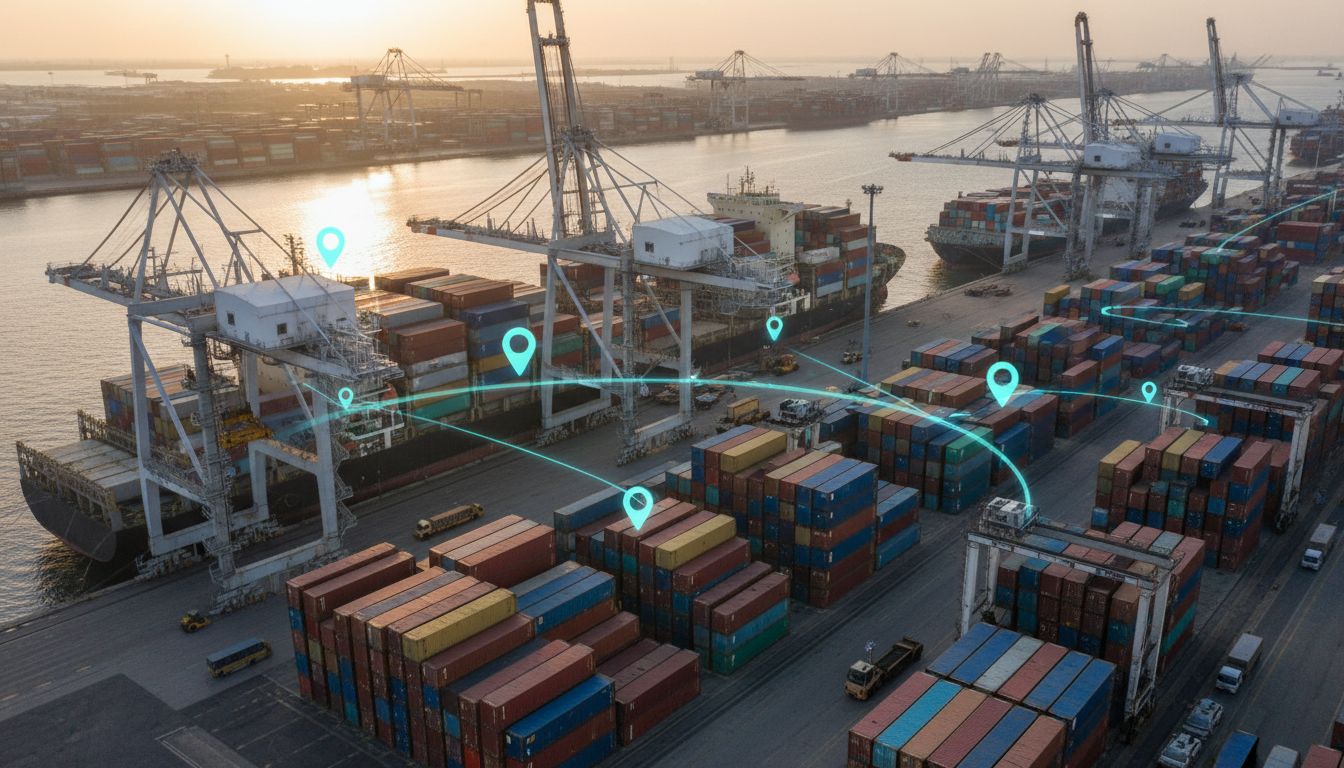Over $529 billion worth of goods arrived in the United States from Europe last year, according to official trade data. With so much at stake, importers cannot afford costly mistakes or delays when bringing European products into the U.S. market. Understanding the critical steps of supplier verification, shipping, documentation, customs, and delivery can help you avoid common pitfalls and keep your supply chain running smoothly.
Quick Summary
| Key Point | Explanation |
|---|---|
| 1. Verify European supplier legitimacy | Use FDA guidelines to evaluate suppliers’ compliance with U.S. import standards through thorough documentation checks. |
| 2. Choose reliable shipping partners | Select freight forwarders with transatlantic experience, customs support, and transparent pricing to ensure smooth logistics. |
| 3. Prepare comprehensive import documentation | Organize all necessary documents like invoices and certificates for compliance and smooth customs clearance. |
| 4. Understand customs clearance process | Navigate duty calculations and regulatory requirements to ensure compliant and efficient entry of goods into the U.S. |
| 5. Track shipment effectively post-clearance | Utilize tracking tools and maintain communication with logistics partners for real-time updates on cargo status. |
 |
|
Table of Contents
- Step 1: Assess European Supplier And Product Legitimacy
- Step 2: Arrange Shipping And Freight Forwarding Services
- Step 3: Prepare Import Documentation And Compliance
- Step 4: Coordinate Customs Clearance And Duties
- Step 5: Verify Delivery And Track Cargo Status
Step 1: Assess European Supplier and Product Legitimacy
This step focuses on thoroughly verifying potential European suppliers and ensuring their products meet U.S. import standards. You will systematically evaluate supplier legitimacy through strategic research and documentation.
Start by leveraging the FDA’s Foreign Supplier Verification Programs guidance. According to the FDA’s official guidance, you must conduct comprehensive hazard analysis and risk evaluation for every potential European supplier.
Your verification process should include multiple critical checks:
Here’s a summary of critical supplier verification checks:
| Verification Check | Purpose | Key Resource |
|---|---|---|
| Manufacturing Certifications | Validate compliance with standards | Supplier documents |
| Quality Control Documentation | Ensure product consistency | Internal QA records |
| Import Alerts/Warnings | Identify past compliance issues | FDA Alerts Database |
| Facility Safety Standards | Meet international safety criteria | Third-party audits |
| Performance History | Assess reliability | FDA Supplier Resources |
- Review the supplier’s manufacturing certifications
- Examine their quality control documentation
- Check for any prior import alerts or compliance warnings
- Verify their production facilities meet international safety standards
The FDA provides excellent Supplier Evaluation Resources that can help you conduct thorough background research. These resources allow you to investigate supplier performance histories and identify potential red flags before committing to an import relationship.
Pro Tip: Request detailed documentation from potential suppliers upfront. Legitimate European manufacturers will be transparent and willing to provide comprehensive compliance information.

Your next step will involve initiating direct communication with your top potential suppliers to confirm their ability to meet your specific import requirements and U.S. safety standards.
Step 2: Arrange Shipping and Freight Forwarding Services
In this step, you will select and coordinate professional shipping and freight forwarding services to transport your European goods safely and efficiently into the United States. Your goal is to find a reliable logistics partner who understands international import regulations.
Start by researching digital logistics platforms that aggregate shipping services. According to research about Eurosender, these platforms can help negotiate lower rates with major transportation providers, potentially reducing your overall shipping costs.
When selecting a freight forwarder, consider these critical factors:
- Experience with transatlantic shipments
- Comprehensive customs documentation support
- Network of reliable carriers and transportation modes
- Transparent pricing and tracking capabilities
As U.S. Customs advises, it is crucial to consult import specialists and consider working with a licensed customs broker who can navigate complex import regulations. Learn more about understanding the role of a freight forwarder to make an informed decision.
Pro Tip: Request detailed quotes from multiple freight forwarders and compare their service offerings, not just their prices. The cheapest option is not always the most reliable.
Your next step will involve preparing comprehensive shipping documentation and coordinating the initial transportation logistics with your selected freight forwarding partner.
Step 3: Prepare Import Documentation and Compliance
In this critical step, you will organize and validate all necessary import documentation to ensure smooth customs clearance and regulatory compliance when bringing European goods into the United States.
Begin by understanding the complex documentation requirements. According to U.S. Trade Department research, you must familiarize yourself with the European Single Administrative Document and EORI/AEO certification schemes. These documents are essential for coordinating compliant paperwork with your European suppliers.
Your documentation preparation should include:
- Commercial invoices with detailed product descriptions
- Certificate of origin
- Packing lists
- Transportation and insurance documents
- Specific regulatory compliance certificates
For specific product categories, additional documentation is crucial. As the Environmental Protection Agency outlines, imports of chemicals require TSCA certification. If you are importing regulated composite wood products, you must maintain detailed supplier statements and records.
Pro Tip: Create a digital documentation tracking system that allows you to quickly retrieve and verify all import compliance paperwork.
Learn more about understanding international trade compliance basics to ensure you do not miss any critical documentation requirements.
Your next step will involve submitting these documents for customs review and preparing for potential additional inspections or verification processes.
Step 4: Coordinate Customs Clearance and Duties
In this essential step, you will navigate the complex process of customs clearance and duty payment for your European imports. Your goal is to ensure smooth entry of goods into the United States while maintaining full compliance with federal regulations.
According to DHL’s import guidelines, the de minimis exemption will end on August 29, 2025. This means all imports from Europe will now be subject to duties, requiring careful calculation and payment.
Key steps for customs clearance include:
- Determine the correct Harmonized Tariff Schedule (HTS) code for your goods
- Calculate duties based on the Cost Insurance and Freight (CIF) value
- Prepare to pay duties through CBP or your shipping courier
- Verify all documentation is accurate and complete
As U.S. Customs and Border Protection advises, while no federal import license is typically required, you may need permits from other agencies. You can use your IRS number or a CBP assigned number for processing.
Pro Tip: Consider working with a licensed customs broker who can help you navigate complex duty calculations and reduce the risk of costly errors.
Your next step will involve submitting your final customs entry and preparing for potential additional inspections or duty assessments.
Step 5: Verify Delivery and Track Cargo Status
In this final step, you will monitor your European import shipment from customs clearance through final delivery. Your objective is to ensure your cargo moves smoothly through the transportation network and reaches its destination without complications.
According to research from customs logistics experts, after customs clearance, your shipment will be released to domestic carriers. You will need to file pre-arrival documents and complete CBP Form 3461/7501 to facilitate this transition.
To effectively track your cargo, take these strategic steps:
- Obtain your unique tracking number from the freight forwarder
- Use the Harmonized Tariff Schedule classification for precise processing insights
- Monitor shipment status through carrier tracking platforms
- Maintain open communication with your shipping partner
Learn how to use global order tracking effectively to stay informed about your shipment’s progress. As the Harmonized Tariff Schedule documentation indicates, understanding your HTSUS classification can help you anticipate customs processing times and potential delays.
Pro Tip: Create a digital tracking dashboard that consolidates information from multiple carriers and platforms.
Your shipment is now on its final journey to your designated destination, marking the successful completion of your European import process.
Eliminate Import Uncertainty with Tailored Logistics Support
Importing from Europe can feel overwhelming with so many steps like supplier verification, compliance, and customs clearance. One missed document or unexpected customs duty could derail your delivery and endanger your business goals. If you have ever faced confusing documentation, worried about supply chain delays, or struggled to track cargo status, you know how critical a trusted logistics partner is for stress-free importing.
Explore industry-specific import solutions

Trust Worldwide Express, Inc. to take the guesswork out of international trade. Our expert team delivers comprehensive support for customs brokerage, freight forwarding, compliance checks, and end-to-end tracking so your cargo moves from Europe to your US destination without costly surprises. Ready to import with confidence and speed? Request a tailored logistics quote today and let your next European shipment set a new standard for smooth deliveries.
Frequently Asked Questions
How do I verify the legitimacy of a European supplier before importing?
To verify a European supplier’s legitimacy, conduct thorough research including checks on manufacturing certifications and quality control documentation. Request detailed information from the supplier to confirm compliance with U.S. standards and reduce risks in your import relationship.
What documents do I need for customs clearance when importing from Europe?
For customs clearance, essential documents include commercial invoices, packing lists, and specific compliance certificates. Organize these documents carefully to ensure smooth processing and avoid potential delays in your shipment.
How can I calculate duties for my imported goods?
To calculate duties for your imported goods, determine the correct Harmonized Tariff Schedule (HTS) code and calculate duties based on the Cost Insurance and Freight (CIF) value. Prepare to pay these duties to clear customs effectively and avoid additional costs.
What steps should I take to track my shipment after customs clearance?
After customs clearance, obtain a unique tracking number from your freight forwarder and use various carrier tracking platforms to monitor your shipment status. Maintaining open communication with your shipping partner can also help you stay updated on any potential delays.
Why is it important to work with a licensed customs broker?
Working with a licensed customs broker can simplify the customs clearance process by ensuring accurate duty calculations and compliance with import regulations. This can significantly reduce the risk of errors that may lead to costly delays in receiving your goods.
How can I reduce shipping costs when importing products from Europe?
You can reduce shipping costs by researching digital logistics platforms that allow for the comparison of quotes from multiple freight forwarders. Request detailed proposals from different providers to assess their services beyond just pricing, ensuring you’re also getting reliable support.
Recommended
- Master Importing Food Products: Step-by-Step US Guide – Worldwide Express, Inc.
- How to Import Goods: A Step-by-Step Guide for Success – Worldwide Express, Inc.
- How to Import from China: Step-by-Step Business Guide – Worldwide Express, Inc.
- Master Exporting Food Products: A Step-by-Step Approach – Worldwide Express, Inc.






